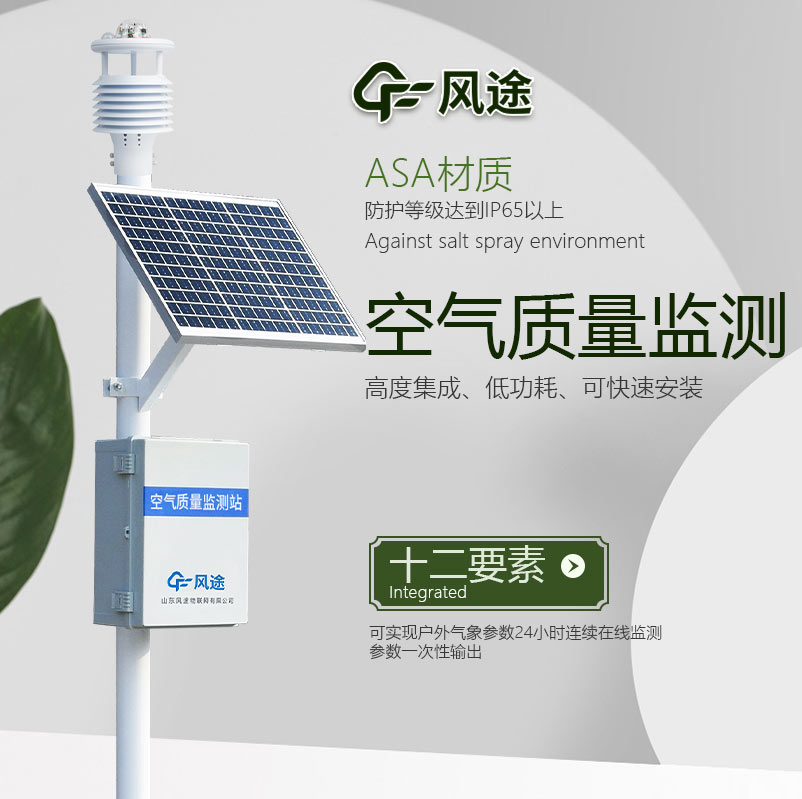Shandong Fengtu IOT Technology Co., Ltd
Sales Manager:Ms. Emily Wang
Cel,Whatsapp,Wechat:+86 15898932201
Email:info@fengtutec.com
Add:No. 155 Optoelectronic Industry Accelerator, Gaoxin District, Weifang, Shandong, China

Sales Manager:Ms. Emily Wang
Cel,Whatsapp,Wechat:+86 15898932201
Email:info@fengtutec.com
Add:No. 155 Optoelectronic Industry Accelerator, Gaoxin District, Weifang, Shandong, China
time:2024-05-16 08:46:58 source:Weather Station viewed:713 time
The rapid development of industrialisation has led to air pollution, which refers to the accumulation in the atmosphere of substances released by human activities or natural processes to a certain extent, causing negative impacts on human beings and the environment.
China's air pollution is changing from the traditional sooty type to a composite type in which multiple pollutants coexist. Although pollution caused by coal burning remains serious, vehicle exhaust pollution has also become more prominent with the increase in the number of vehicles, bringing new problems such as haze, photochemical smog and acid rain.
China's air quality monitoring focuses on six indicators: sulphur dioxide, nitrogen dioxide, respirable particulate matter, ozone, carbon monoxide and PM2.5. Measures to improve air quality include planting trees, using new energy sources, developing public transport, controlling vehicle emissions, regulating polluting enterprises, and reducing dust pollution caused by building construction and so on.
Many cities at home and abroad are now focusing on improving air quality by setting up gridded micro air monitoring stations. These monitoring stations are widely deployed in critical areas such as industrial zones, high-traffic areas and urban highways with the aim of effectively monitoring air quality and taking action to safeguard public health.
The gridded air quality monitoring micro-stations integrate a wide range of sensors for monitoring particulate matter, sulphur dioxide, carbon monoxide, nitrogen dioxide, ozone and total volatile organic compounds, etc. They are capable of accurately monitoring particulate matter of different particle sizes including PM1.0, PM2.5, PM10 and total suspended particulates (TSP), and provide an efficient technical means for urban air quality monitoring and management.

What are the negative oxygen ion monitoring equipment? What is the role? In daily life, we often hear terms such as "negative oxygen ions". So what are these? Let's find out below!...
Integrated radar water level gauge system utilizes a Frequency Modulated Continuous Wave (FMCW) radar system to achieve non-contact, high-precision measurement of water and sediment levels. The device features ultra-low power consumption, a compact structure, and strong anti-interference capabilities, making it suitable for water level monitoring in complex environments such as rivers, lakes, flood warning systems, reservoirs, and sewage networks....
Ultrasonic wind speed and direction sensor is a new type of meteorological sensor. It uses ultrasonic technology to measure wind speed and direction, and has the following advantages over traditional mechanical wind speed and direction meters:Higher accuracy: Ultrasonic wind speed and direction sens...
FT-WQX2 Ultrasonic Wind Speed Direction Sensor applies the principle of ultrasonic time difference method. By transmitting continuous frequency-modulated ultrasonic signals, it utilizes the characteristic that the propagation speed of ultrasonic waves in the air is affected by wind speed to measure...